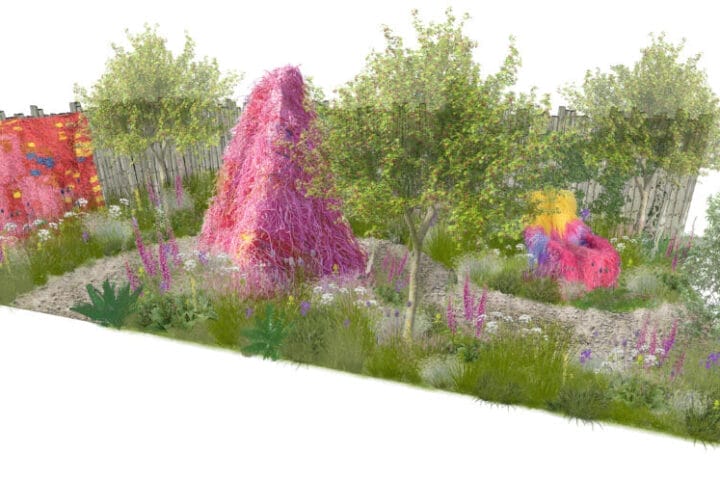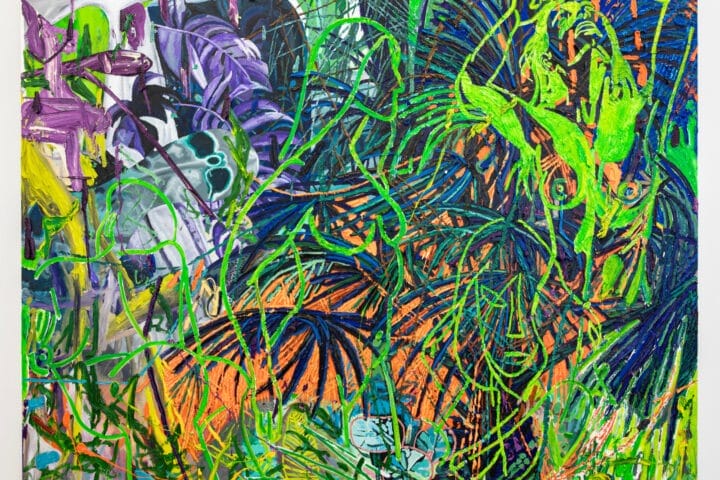Marina Perez Simão. Tudo é e não é. April 1–24, 2021. 540 West 25th Street. New York
New York – Pace Gallery is pleased to debut São Paulo-based artist Marina Perez Simão’s first solo exhibition in New York City. Rooted in the natural landscape of her native Brazil, Simão’s luminous oil paintings pulse with a magnetic, musical, and hypnotic presence that make the viewer’s eye dance. Influenced by painters such as Tarsila do Amaral, Agnes Pelton, and Luchita Hurtado, Simão’s work is situated within a larger constellation of artists who have similarly used the landscape to explore the metaphysical elements of nature. With the artist’s new series of paintings, which will be unveiled at Pace’s New York space this spring, Simão presents a symbol of hope—a beacon for a future not yet mapped out but filled with infinite possibilities. Referencing a phrase by Brazilian novelist João Guimarães Rosa, the exhibition title, Tudo é e não é, translates to Everything is and is not, encompassing the ambiguity of life and abstraction as a whole. The presentation marks Simão’s inaugural solo exhibition with Pace since joining the gallery in January 2021.
Building on the artist’s process of combining her personal memories with literary and musical references to create singular, abstracted landscapes, Simão’s new body of work reflects the evolution of her artistic practice while quarantining in Brazil this past year. Grounding her overarching work is Simão’s understanding of nature as a force to be respected and revered, which can be traced back to her upbringing in Minas Gerais and Rio de Janeiro. Minas Gerais is a cool, mountain town surrounded by hills and fog that rises in the foothills. Rio de Janeiro, on the other hand, presents a dramatic meeting between cliffs and sea in which the ocean has the overwhelming potential to overtake the land. Simão’s paintings reflect the respective phenomena of each of her lived environments while depicting uncharted territories, creating new worlds onto themselves. The artist states of her painting practice: “I try to play around and subvert the elements of the landscape, maybe as an attempt to go somewhere that I’ve never been before, but at the same time that is familiar.”
Unlike her previous work, these new paintings see Simão honing her study of light—a formal device and metaphorical conceit in her practice. Through her layering and juxtaposition of rich hues of contrasting colors, Simão captures light’s shifting temperament on the canvas as seen from her home in São Paulo this past year, from the soft morning rays cast across one’s face, to the forceful glare of noon, and the apocalyptic last flash before a storm.
Neither solid nor liquid, sky or ground, the shapes in Simão’s works defy material classification. Her paintings, comprising disparate references and visual cues, often leave the viewer with a sense of unresolve or continued wonder. Like Guimarães Rosa’s Grande Sertão: Veredas (The Devil to Pay in the Backlands)—a literary masterpiece published in 1956 that explores the complex dimensions of the human psyche as attributed to the Minas Gerais backlands—Simão’s paintings reflect a postmodern Brazilian generation on the verge of continual change. With her own, authored synthesis of light, associative gesture, and compositional lyricism, Simão portrays otherworldly topographies that activate all of the viewer’s senses, unleashing gravity’s reductive grip on what is imaginable.
Marina Perez Simão (b. 1980, Vitória, Brazil) has developed a working process based fundamentally on the accumulation and juxtaposition of memories and images. By combining personal experiences and multiple references stemming from fields such as philosophy, literature, and journalism, the artist collects certain narratives in order to edit them through pictorial means that do not belong to any predefined language; rather, they develop with an organic practice, which combines thematic density and a delicate treatment.
Simão uses a variety of techniques, such as collage, drawing, and oil painting, as starting points in order to marry interior and exterior landscapes, she composes visual journeys that sometimes traverse the unknown, the abstract and the nebulous, but also include visions and memories.
Simão’s work is held in several public collections worldwide, including the Musée d’Art Moderne et Contemporain de Saint-Étienne in France, The Ekard Collection in the Netherlands, and the Samdani Art Foundation in Bangladesh, as well as the Speed Art Museum in Kentucky and the University of Chicago in the United States.
Pace is a leading international art gallery representing some of the most influential contemporary artists and estates from the past century, holding decades-long relationships with Alexander Calder, Jean Dubuffet, Barbara Hepworth, Agnes Martin, Louise Nevelson, Isamu Noguchi, and Mark Rothko. Pace enjoys a unique U.S. heritage spanning East and West coasts through its early support of artists central to the Abstract Expressionist and Light and Space movements.
Since its founding by Arne Glimcher in 1960, Pace has developed a distinguished legacy as an artist-first gallery that mounts seminal historical and contemporary exhibitions. Under the current leadership of President and CEO Marc Glimcher, Pace continues to support its artists and share their visionary work with audiences worldwide by remaining at the forefront of innovation. Now in its seventh decade, the gallery advances its mission through a robust global program—comprising exhibitions, artist projects, public installations, institutional collaborations, performances, and interdisciplinary projects. Pace has a legacy in art bookmaking and has published over five hundred titles in close collaboration with artists, with a focus on original scholarship and on introducing new voices to the art historical canon. The gallery has also spearheaded exploration into the intersection of art and technology through new business models, exhibition interpretation tools, and representation of artists engaging with technology.
Today, Pace has nine locations worldwide including London, Geneva, a strong foothold in Palo Alto, and two galleries in New York—its headquarters at 540 West 25th Street, which welcomed almost 120,000 visitors and programmed 20 shows in its first six months, and an adjacent 8,000 sq. ft. exhibition space at 510 West 25th Street. Pace was one of the first international galleries to establish outposts in Asia where it operates permanent spaces in Hong Kong and Seoul. In July 2020 Pace opened a temporary gallery space in East Hampton, New York that will be programmed through October 2021. Additionally, the gallery’s seasonal exhibition space in Palm Beach will be open through spring 2021. In fall 2021, Pace will continue to expand its European presence with the opening of a larger gallery space in London.










